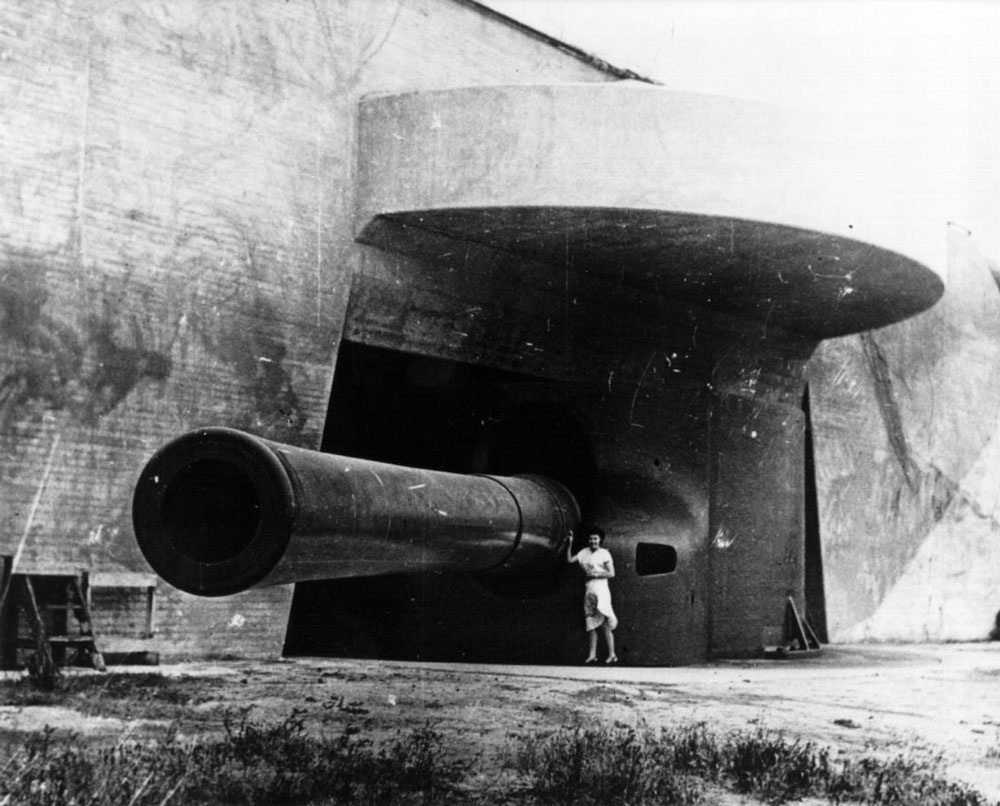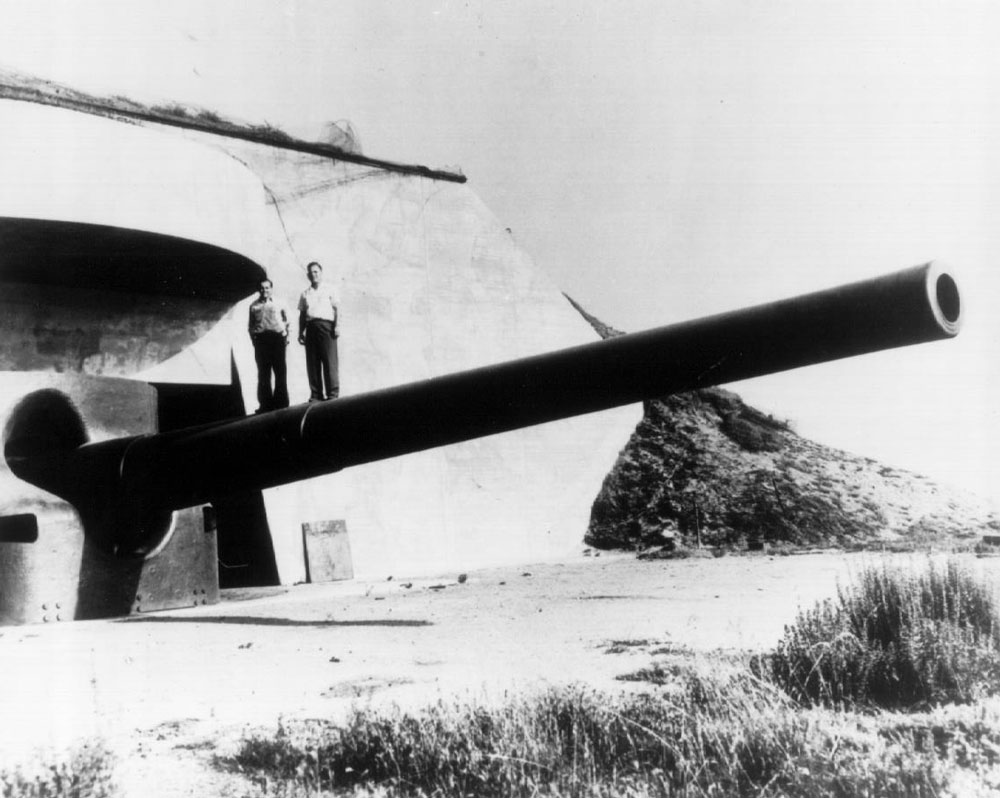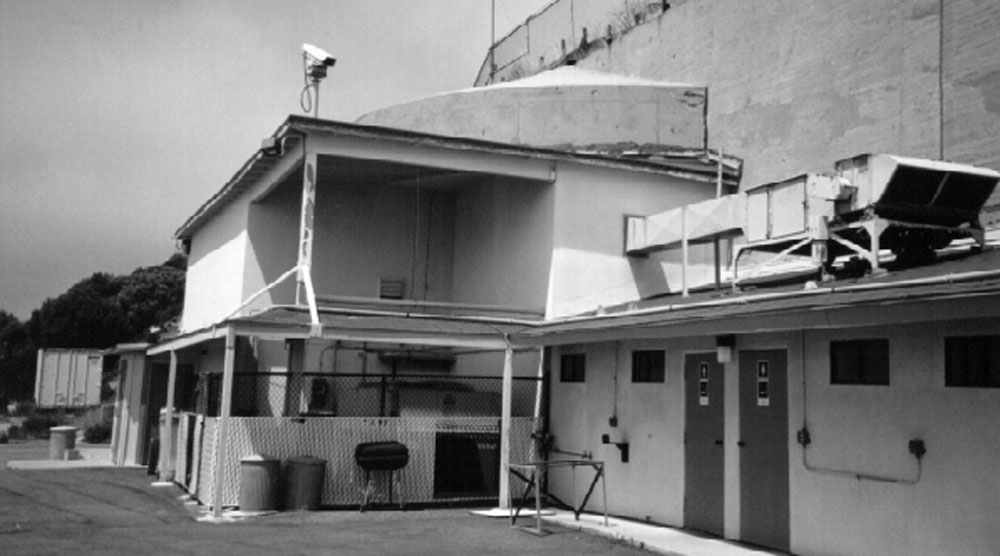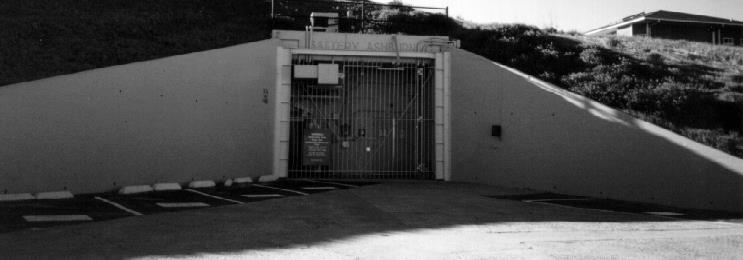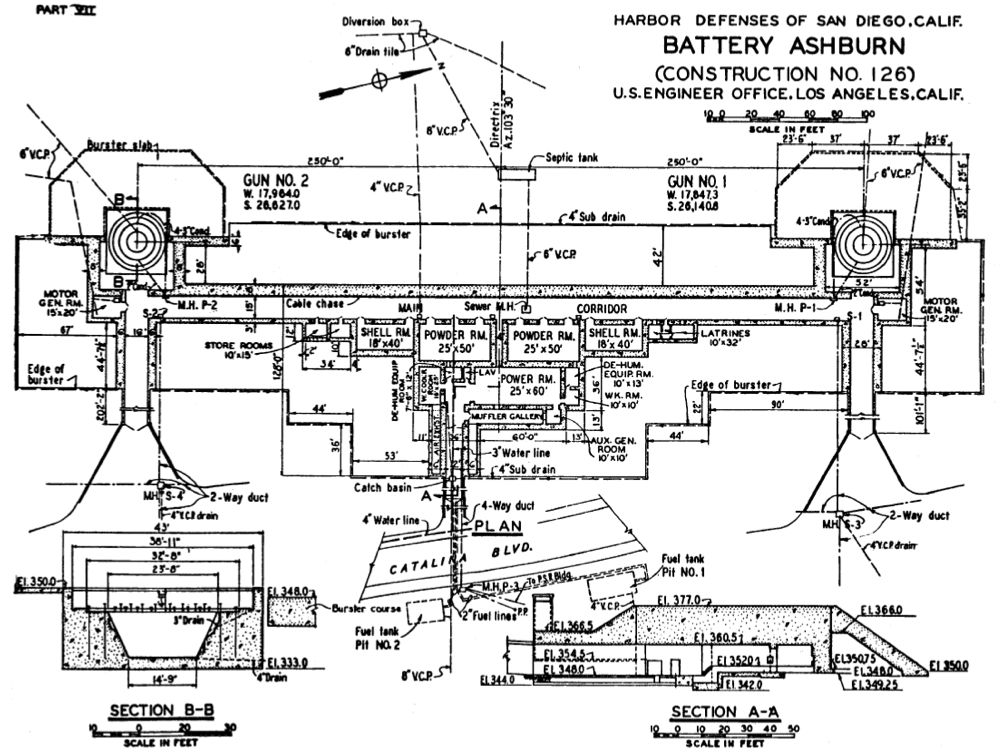In 1940 the general staff approved the construction of two 16-inch gun batteries and three 6-inch batteries as the primary ordnance for the San Diego Harbor. The 16-inch batteries were to be casemated and steel shields would protect the 6-inch guns.
In November 1941, the Chief of Engineers received funds for the construction of a 16-inch gun battery at Fort Rosecrans. These two guns, the largest type in the harbor defenses of the United States, were the only ones in San Diego's defenses to be casemated. Known first as Battery Construction No. 126, it was named in honor of Major General Quinn Ashburn, who graduated from West Point in 1897 and began his army career in the Artillery. He won a Silver Star in the Philippines and a Purple Heart in France. General Ashburn died in 1941.
The Macco Construction Company began work on the battery in June 1942 and completed it in March 1944 at a cost of $1,324,000. The guns were proof-fired in July, but the steel shields did not arrive until early 1945.
The guns were 816 inches long designated Model I Mark II Nos. 71 and 97 made by Bethlehem Steel and Watervliet Arsenal respectively. They were mounted in March 1944 on high-angle barbette carriages Model M-4 Nos. 31 and 39 made by Wellman Engineering Company and Watervliet Arsenal respectively. The guns had a maximum range of 48,000 yards at 47 degrees elevation and an effective range of 44,000 yards or 25 miles at 41 degrees. The field of fire was 145 degrees. The weight of the barrel was 146 tons while the weight of the carriage was 39 tons. The base rings for each gun weighed 84 tons. The two guns were mounted 500 feet apart.
Battery Ashburn served through the rest of World War II and was declared surplus in May 1948.
Ashburn's plotting and switchboard room was built as a large underground concrete structure to the north and east across the road from the battery. Its command post was in the HDCP.
Battery Humphreys
In February 1942, work began on the first of three 6-inch batteries, referred to as Construction No. 238. V. R. Dennis of San Diego won the contract in the amount of $128,000. This battery of two 6-inch rapid fire guns on barbette mounts protected by 2-inch steel shields was located on top of Point Loma above the new lighthouse. The design was similar to those already described for the 6-inch batteries in the Bay Area.
The actual guns were Model M1903A2 Nos. 1 and 101 manufactured by the Watervliet Arsenal. The carriages were barbette Nos. 100 and 101 manufactured by the Wellman Engineering Company.
Battery Humphreys was named in honor of Captain Charles Humphreys, Fort Rosecrans' first Commanding Officer.
The battery was completed on October 14, 1943.
